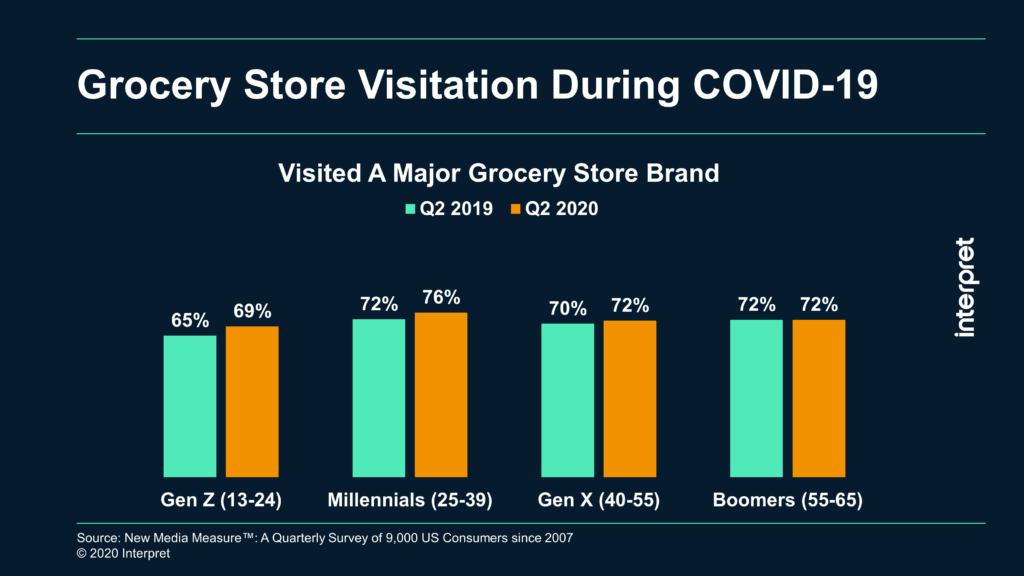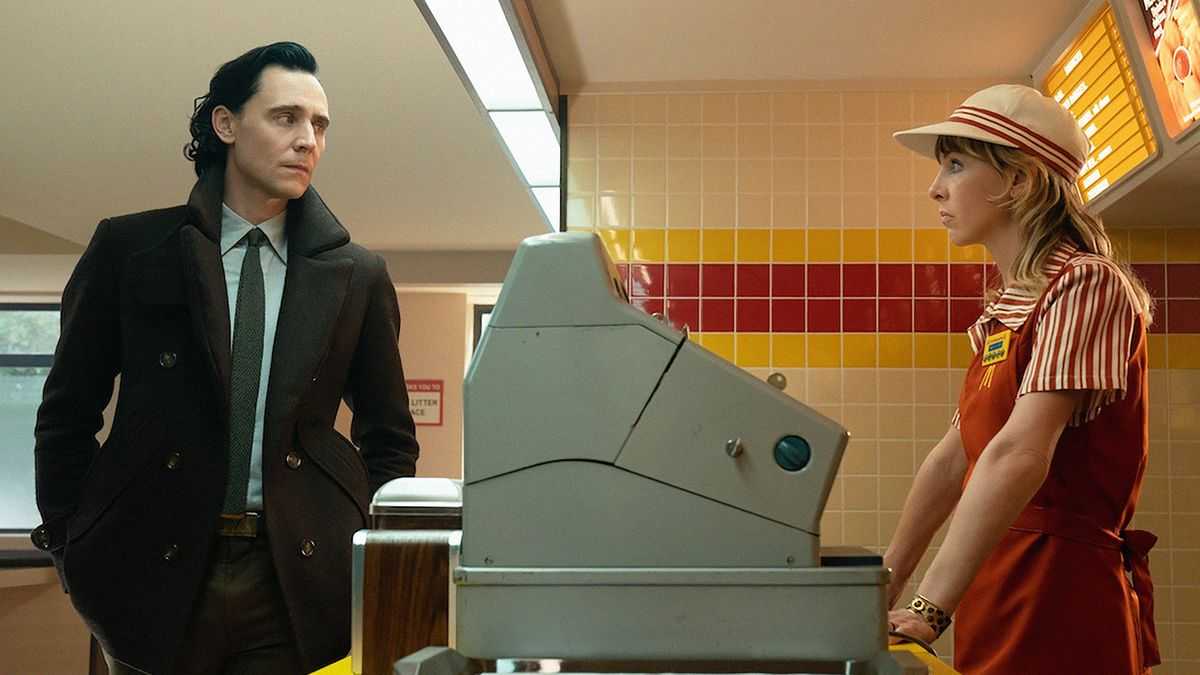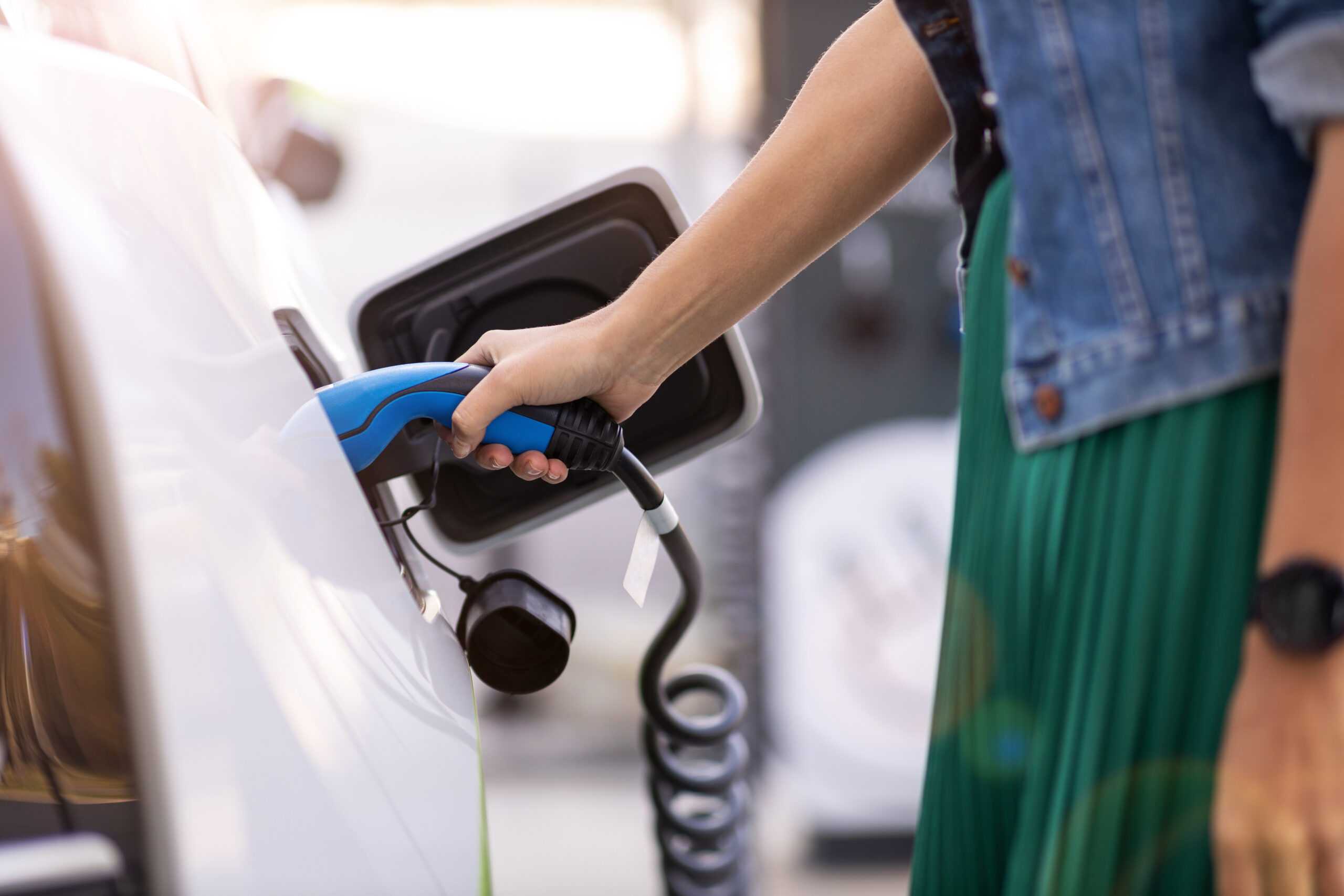Hyper-manic stockpiling of toilet paper aside, the average American has altered their grocery store shopping behavior significantly since the pandemic began. Many have opted for fewer visits but with a greater volume of groceries purchased to keep their homes stocked in between trips, while others have decided to rely on personal shopper services like Instacart, either for delivery to the home or curbside pickup at the store. In fact, Instacart has seen its usage more than double year-over-year, according to Interpret’s New Media Measure®, as 7% of Americans or about 23 million people use the service.
Interestingly, whether for curbside pickups or in-person shopping, Interpret data shows that more Millennials and Gen Z consumers have visited a major grocery store chain, with both cohorts seeing a 4%-point uptick year-over-year. This presents a unique opportunity to advertisers to reach a coveted younger demographic that’s spending more on groceries. Supermarkets can team with brands to post advertisements on outdoor signage, on store shelves, on shopping carts, checkout dividers, and even on the back of a printed receipt.
Given the rise of online shopping, brands also must seriously consider online advertising or using Instacart’s self-serve advertising platform, which connects brands with shoppers at a time when they’re actively shopping and looking to spend money. Giants like Procter & Gamble, Unilever, and PepsiCo are just a few of the brands using the platform. Considering that Instacart delivers from 25,000 grocery stores in more than 5,500 cities across North America, the company is amassing a huge amount of consumer data on precisely what shoppers like to buy, and that’s invaluable data for big brands.
“One of the keys to marketing is being nimble and adaptable,” says Janine Cannella, Interpret’s VP of Marketing. “With so much upheaval being caused by the pandemic, brands should be prepared to pivot quickly. Consumer behavior shifts are creating new and exciting opportunities for advertisers.”






